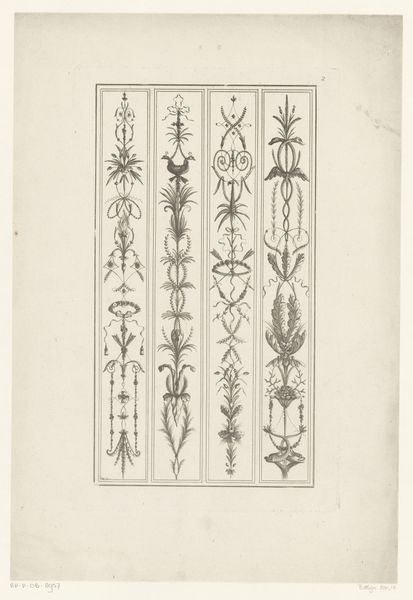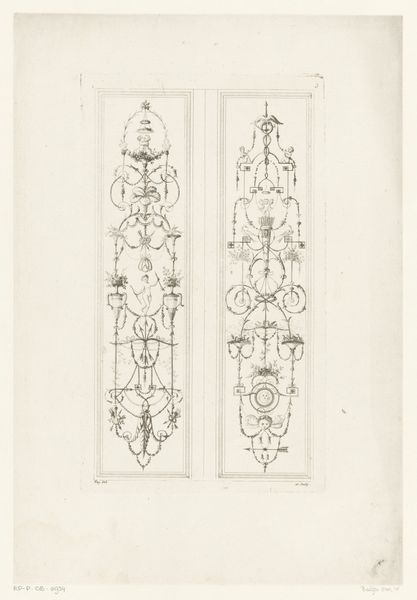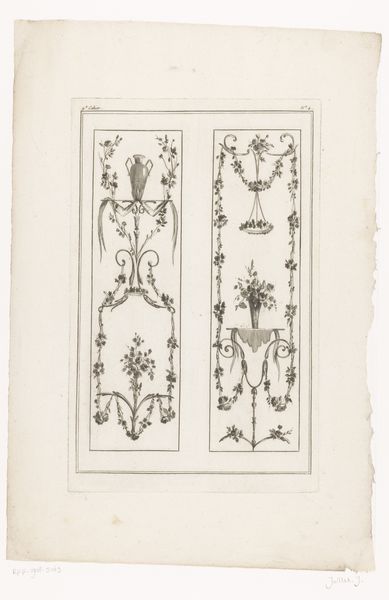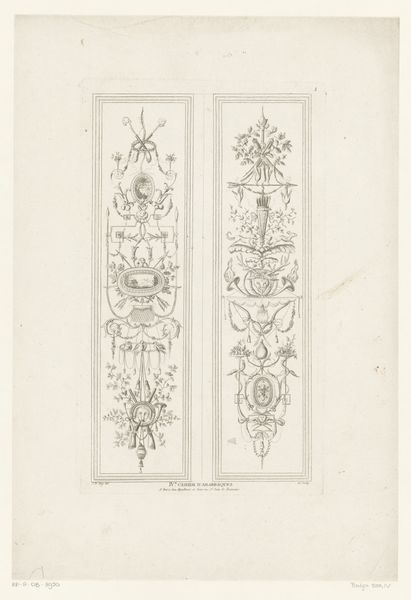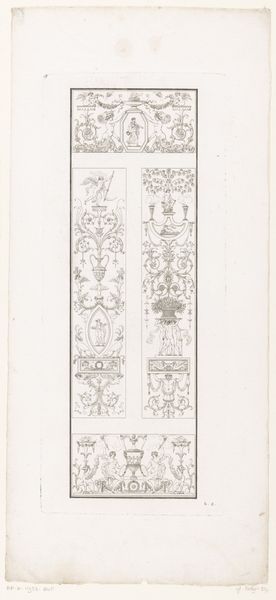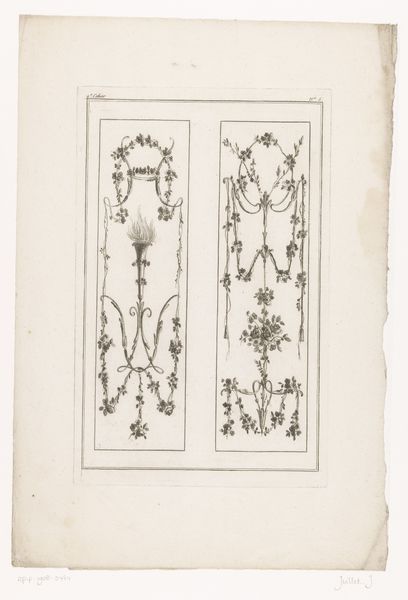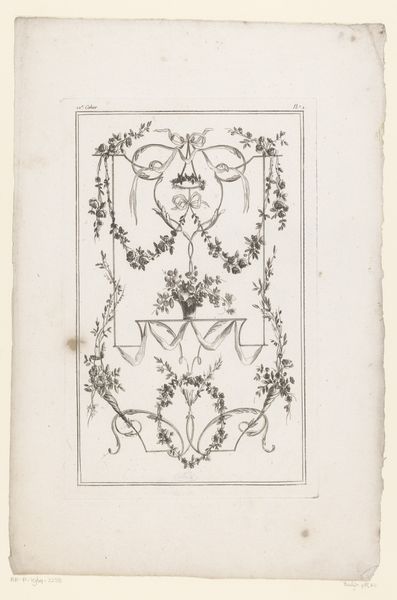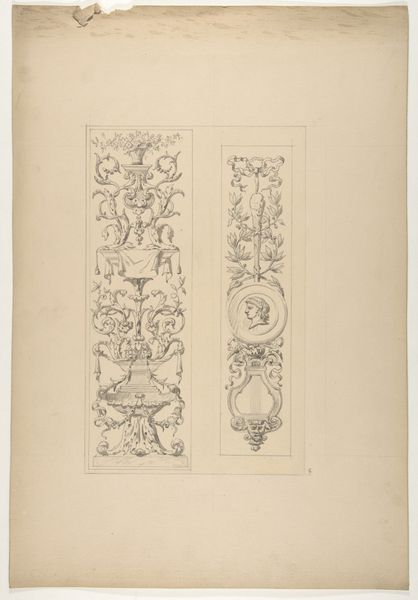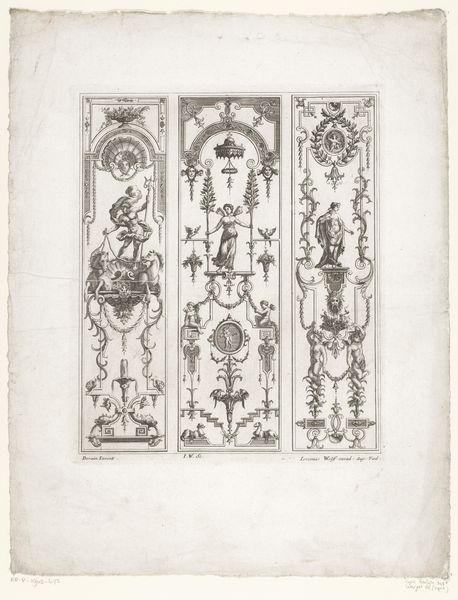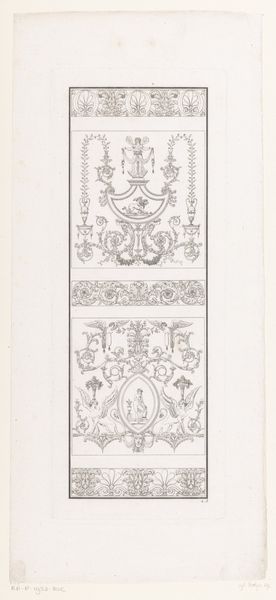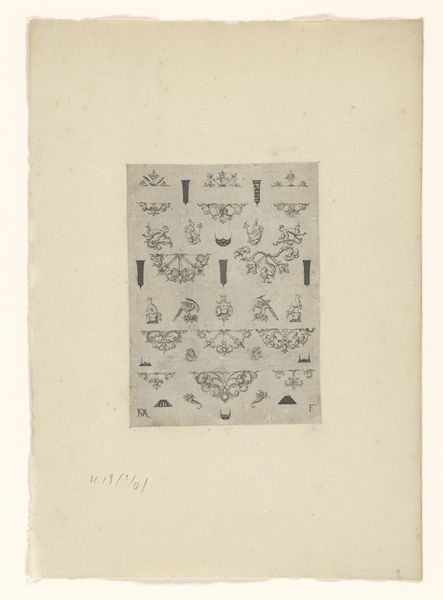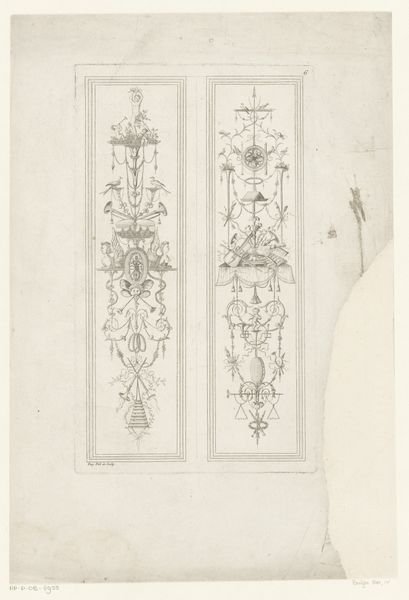
drawing, engraving
#
drawing
#
geometric
#
line
#
decorative-art
#
engraving
Dimensions: height 331 mm, width 198 mm
Copyright: Rijks Museum: Open Domain
Editor: So, here we have "Arabesken met vazen, fakkel en veren," created sometime between 1784 and 1796 by Jean Baptiste Fay, held at the Rijksmuseum. It’s an engraving—super detailed, with a real sense of...well, order. I'm struck by how meticulously each element is rendered, yet I don't fully grasp the purpose behind arranging all these objects. What story, if any, do you think Fay is trying to tell with this parade of arabesques? Curator: A parade indeed! This engraving breathes a very specific air. It's a snippet of late 18th-century obsession with Neoclassicism, dusted with a distinctly French fondness for *arabesque*, which, let's face it, can feel like organised chaos, but a delightful kind of chaos, no? Imagine walls bedecked with this, furniture subtly whispering such arrangements... Editor: I suppose I wasn't imagining the work in context as part of something bigger like a design element within a building. Curator: Exactly! Consider those individual elements – vases, a torch, feathers… they're fragments of a visual vocabulary meant to evoke ideas of luxury, learning, triumph, sometimes even mortality. All the big themes! Editor: And they are displayed on a vertical composition and segmented into sections... I also notice how light they are - there is a spacious airy sensation coming from the off-white paper as the base, creating distance. Curator: Indeed. It reminds us that art isn’t just about deep emotions all the time but can be playful. It could act like icing on the cake... sometimes a delightful, dizzying visual treat. What’s *your* take-away from these orderly, yet playfully chaotic arabesques now? Editor: I see it less as random and more as an intentional design, with each arabesque having unique meanings. Thank you. It's helped me think about the context it was meant to live in.
Comments
No comments
Be the first to comment and join the conversation on the ultimate creative platform.
